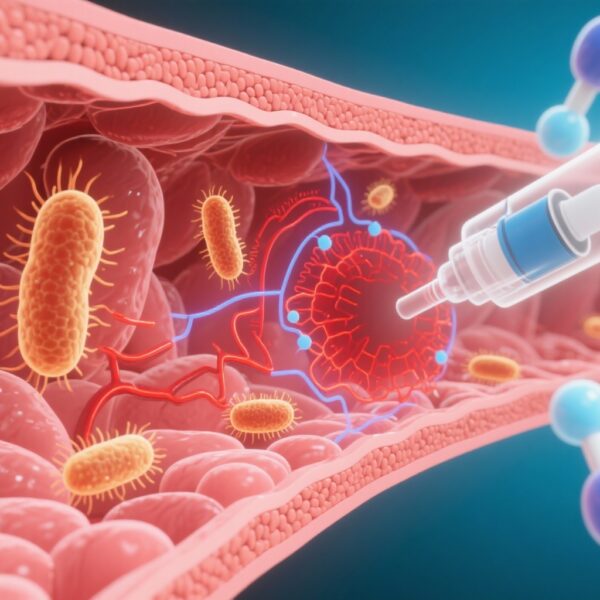Introduction: The Growing Burden of Prostate Cancer
Prostate cancer (PCa) is one of the most commonly diagnosed cancers in men worldwide, accounting for approximately 15% of all new male cancer cases. As the global burden of prostate cancer continues to increase, identifying effective preventive measures has become a pressing challenge. While diet and physical activity have demonstrated some promise in secondary prevention, there remain no clear evidence-based guidelines specifically advising healthy adult men on how to reduce their risk of developing prostate cancer.
Among the few known risk factors for PCa—such as age, race, family history, and inherited genetic variations—none are modifiable. Therefore, attention has turned to potential lifestyle factors that men can change. One such factor is sexual activity, specifically ejaculation frequency, which has been hypothesized to influence prostate cancer risk through a variety of biological mechanisms.
What Does the Science Say? Insights from Harvard’s Health Professionals Follow-up Study
Harvard Medical School researchers, led by Jennifer R. Rider and colleagues, recently published an influential study titled “Ejaculation Frequency and Risk of Prostate Cancer: Updated Results with an Additional Decade of Follow-up” in the journal European Urology (Impact Factor = 25). This study is a robust prospective cohort analysis involving 31,925 men from the Health Professionals Follow-up Study (HPFS) who reported their average ejaculation frequency at three key life stages: ages 20-29, 40-49, and the year prior to responding to the questionnaire in 1992. These men were then followed through 2010 for prostate cancer incidence.
The study utilized self-reported data over 480,831 person-years of follow-up, with 3,839 men diagnosed with PCa during this period. Using Cox proportional hazards models, the researchers estimated the relative risk of developing prostate cancer according to ejaculation frequency category, adjusting for multiple confounding factors.
Key Findings
– Men reporting an average of ≥21 ejaculations per month during ages 20-29 had a 19% reduced risk of prostate cancer compared to those with 4-7 ejaculations per month (Hazard Ratio [HR] = 0.81; 95% Confidence Interval [CI]: 0.72-0.92; p trend < 0.0001).
– Similarly, men reporting ≥21 ejaculations per month at ages 40-49 experienced a 22% reduced risk (HR = 0.78; 95% CI: 0.69-0.89; p trend < 0.0001).
– The protective association persisted when evaluating not just total prostate cancer but also clinically significant disease subgroups.
These results confirm earlier findings from 2004, which showed that middle-aged men with high ejaculation frequency (≥21 times per month) had almost 50% lower risk of prostate cancer than men reporting average rates of 4-7 times per month.
Potential Biological Mechanisms: The Prostate Stagnation Hypothesis
One leading hypothesis explaining this association is the “prostate stagnation” theory. According to this theory, infrequent ejaculation may lead to the accumulation of potentially carcinogenic substances within the prostate gland, thereby increasing the opportunity for malignant transformation. Regular ejaculation might help flush out these secretions, reducing the local concentration of harmful compounds and inflammatory agents that could initiate or promote cancer development.
Additionally, frequent sexual activity may favorably influence hormone levels, immune function, and overall prostate health, all of which could contribute to a lower risk.
Addressing Concerns: Reverse Causality and Confounding Factors
A critical question raised by initial studies was whether men with undiagnosed prostate cancer might have reduced sexual activity due to symptoms, causing apparent but misleading associations. The updated HPFS study addressed this by extending follow-up time by an additional decade and doubling the number of PCa cases, allowing more comprehensive analyses to minimize reverse causality.
The study also examined the effect of prostate-specific antigen (PSA) screening and clinical disease characteristics on the association between ejaculation frequency and prostate cancer risk. Findings were consistent across subgroups, supporting a genuine protective effect.
Furthermore, because ejaculation frequency might serve as an indicator of overall health status, statistical analyses accounted for competing causes of death and various potential confounders, strengthening the validity of the findings.
What Does This Mean for Men: Practical Considerations
While the study presents compelling evidence that frequent ejaculation is associated with a reduced risk of prostate cancer, it is important to interpret these findings in context.
– The protective effect relates to higher frequency ejaculation starting early in adulthood and continuing through middle age.
– The observational nature of the study means causality cannot be definitively established, and other lifestyle factors might also contribute.
– Men should consider maintaining a healthy lifestyle overall, including balanced diet, regular exercise, and routine medical screenings.
Engaging in consensual sexual activity, either with a partner or through masturbation, can be considered a natural and potentially beneficial component of prostate and overall male health.
Expert Insights and Recommendations
Dr. Jennifer Rider, the lead author, highlights that these findings encourage viewing sexual health as an integral part of preventive strategies against prostate cancer. She emphasizes that “increasing ejaculation frequency is a feasible, non-invasive potential approach that may contribute to prostate cancer risk reduction, pending further research.”
Urologists and oncologists may consider discussing sexual activity habits as part of comprehensive men’s health assessments and promoting open dialogue about sexual health without stigma.
Patient Scenario: John’s Story
John, a 52-year-old man, recently underwent routine medical check-ups and expressed concerns about his risk for prostate cancer due to a family history of the disease. After discussing lifestyle factors with his primary care physician, John learned about the potential benefits of regular sexual activity in reducing prostate cancer risk.
Motivated by this information, John adopted healthier habits, including maintaining an active sex life averaging approximately 20 times per month, alongside exercising and eating a balanced diet. Over time, he noted improved mood and wellbeing, while continuing to undergo recommended prostate screenings.
John’s story illustrates how integrating sexual health into overall wellness strategies can empower men to take proactive steps toward cancer prevention and holistic health.
Conclusion: Integrating Knowledge into Men’s Health
Prostate cancer remains a major health challenge for men worldwide, but emerging evidence offers promising insights into modifiable lifestyle factors. Frequent ejaculation, around 21 times per month, appears to be linked to a significantly lower risk of prostate cancer, according to robust longitudinal data from Harvard’s Health Professionals Follow-up Study.
While this association does not replace traditional prevention measures, it adds a valuable dimension to men’s health strategies. Continued research is essential to confirm causality, understand underlying mechanisms, and develop evidence-based guidelines.
For now, men can consider regular sexual activity as part of a balanced lifestyle aimed at enhancing prostate health and reducing cancer risk.
References
1. Rider JR, Wilson KM, Sinnott JA, et al. Ejaculation Frequency and Risk of Prostate Cancer: Updated Results with an Additional Decade of Follow-up. European Urology. 2016;70(6):974-982. doi:10.1016/j.eururo.2016.06.010
2. National Cancer Institute. Prostate Cancer Statistics. https://seer.cancer.gov/statfacts/html/prost.html. Accessed June 2024.
3. Parsons JK. Etiology and Prevention of Prostate Cancer. Urol Clin North Am. 2013;40(3):261-273. doi:10.1016/j.ucl.2013.04.002
4. Sciarra A, Mariotti G, Salciccia S, Montanari E. Prostate cancer and the prostate stagnation hypothesis: new horizons and controversies. Int J Mol Sci. 2021;22(12):6344. doi:10.3390/ijms22126344
This article is intended for informational purposes and does not replace professional medical advice. Men concerned about prostate cancer risk should consult their healthcare providers.



